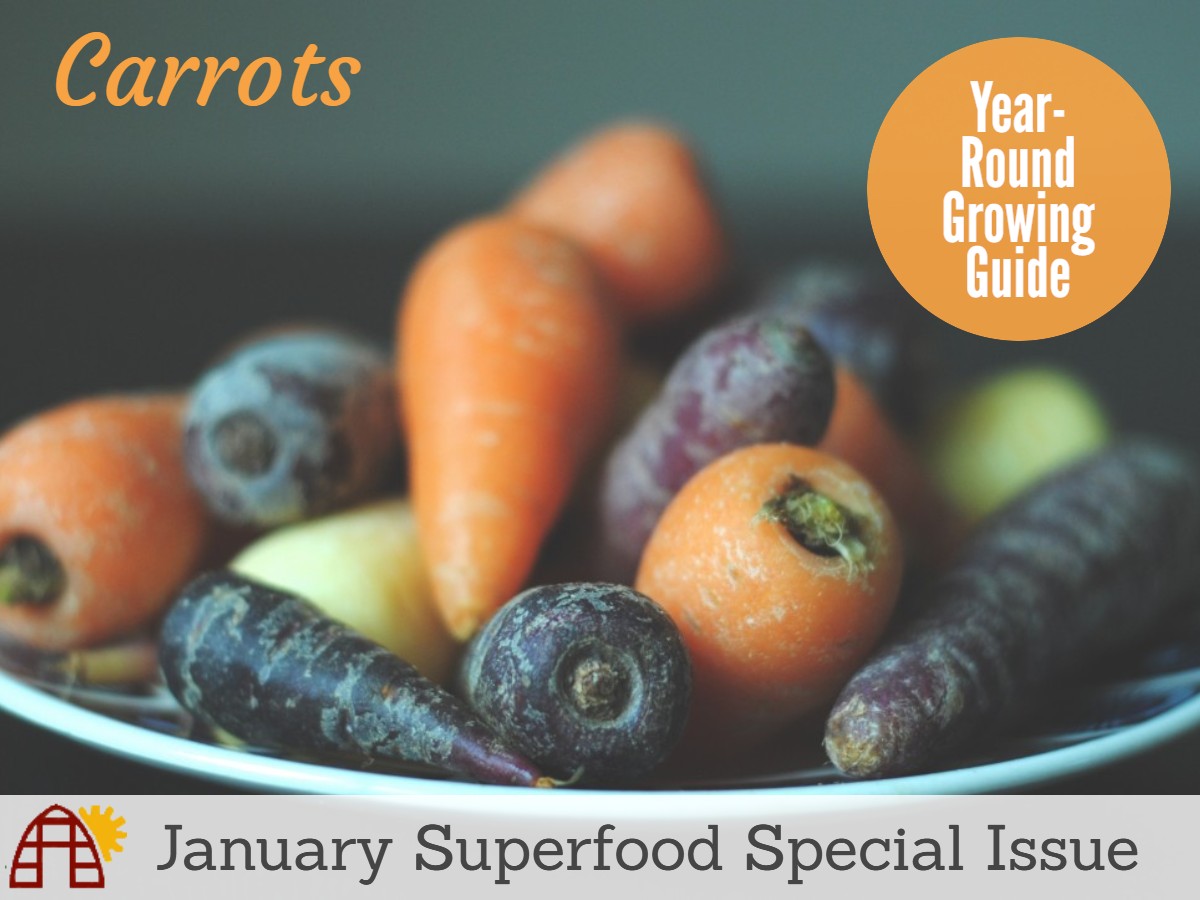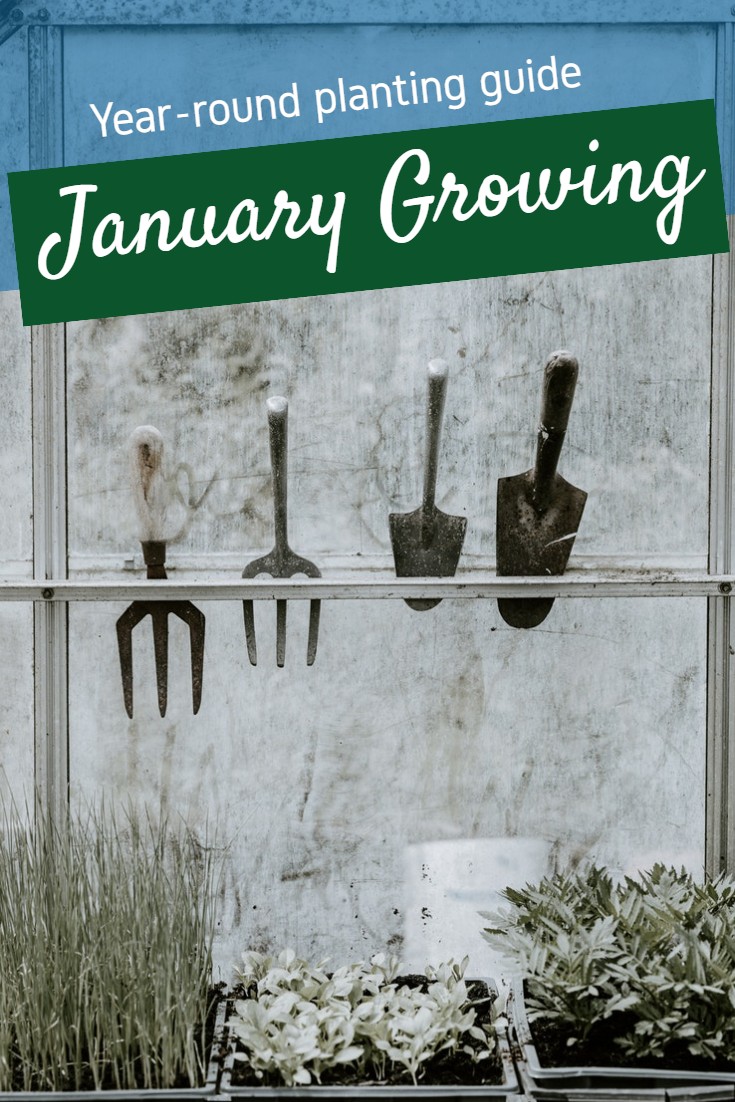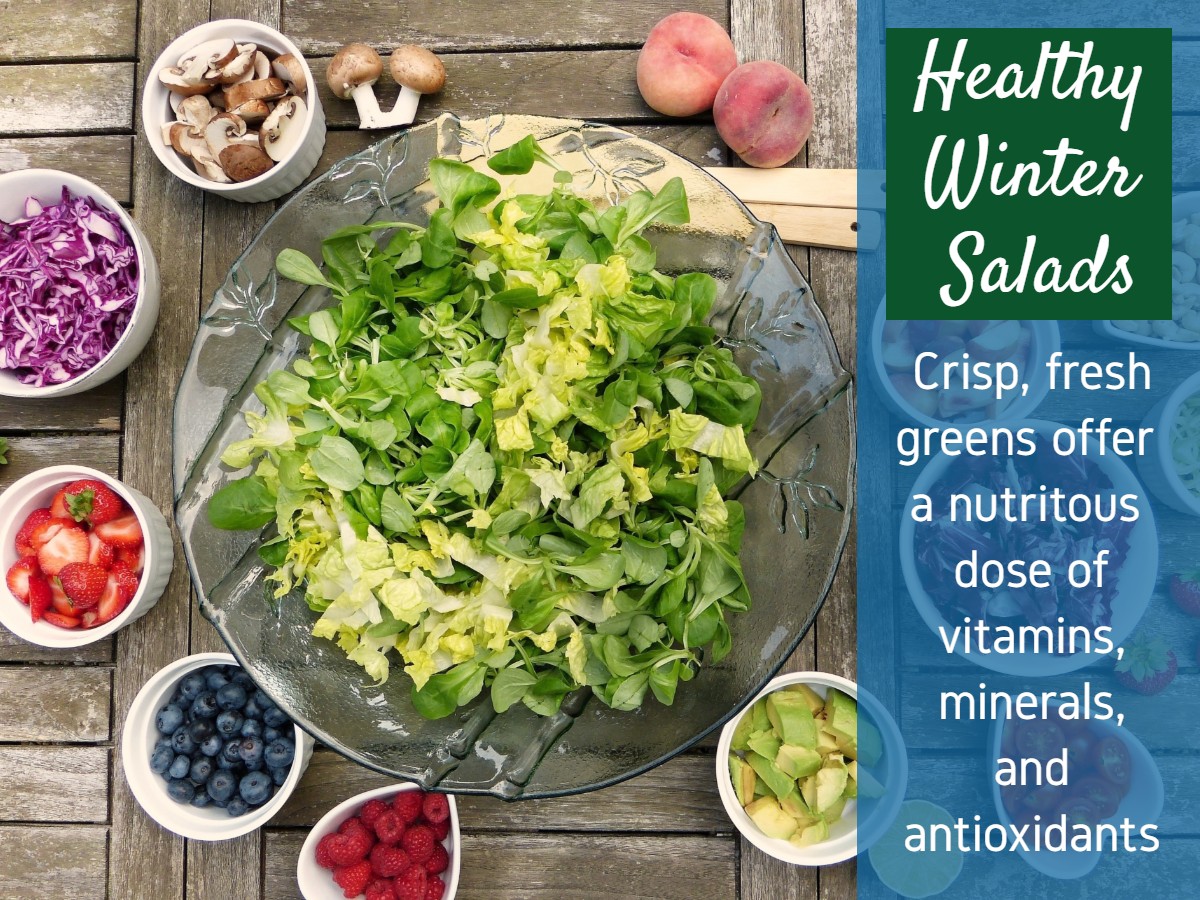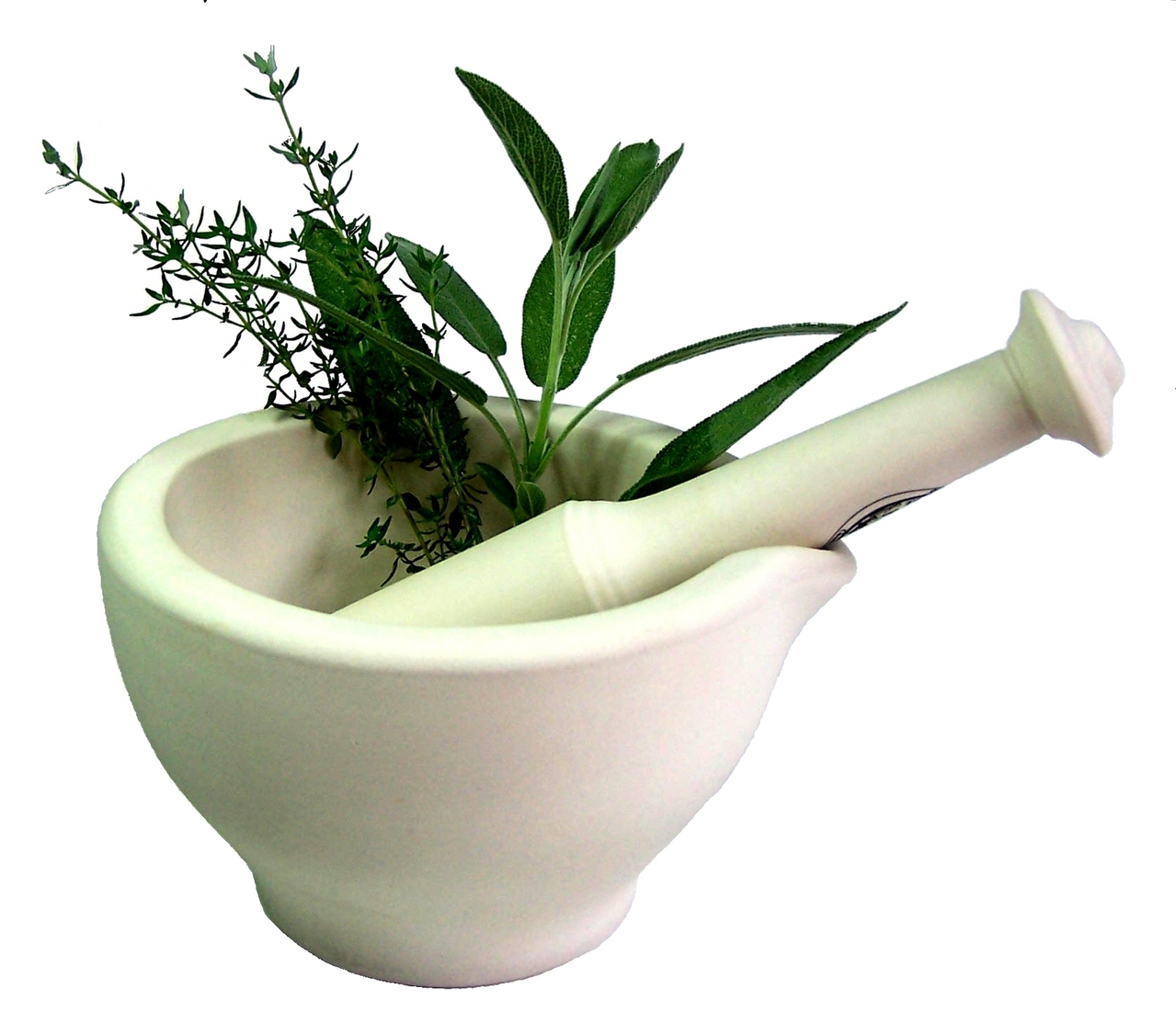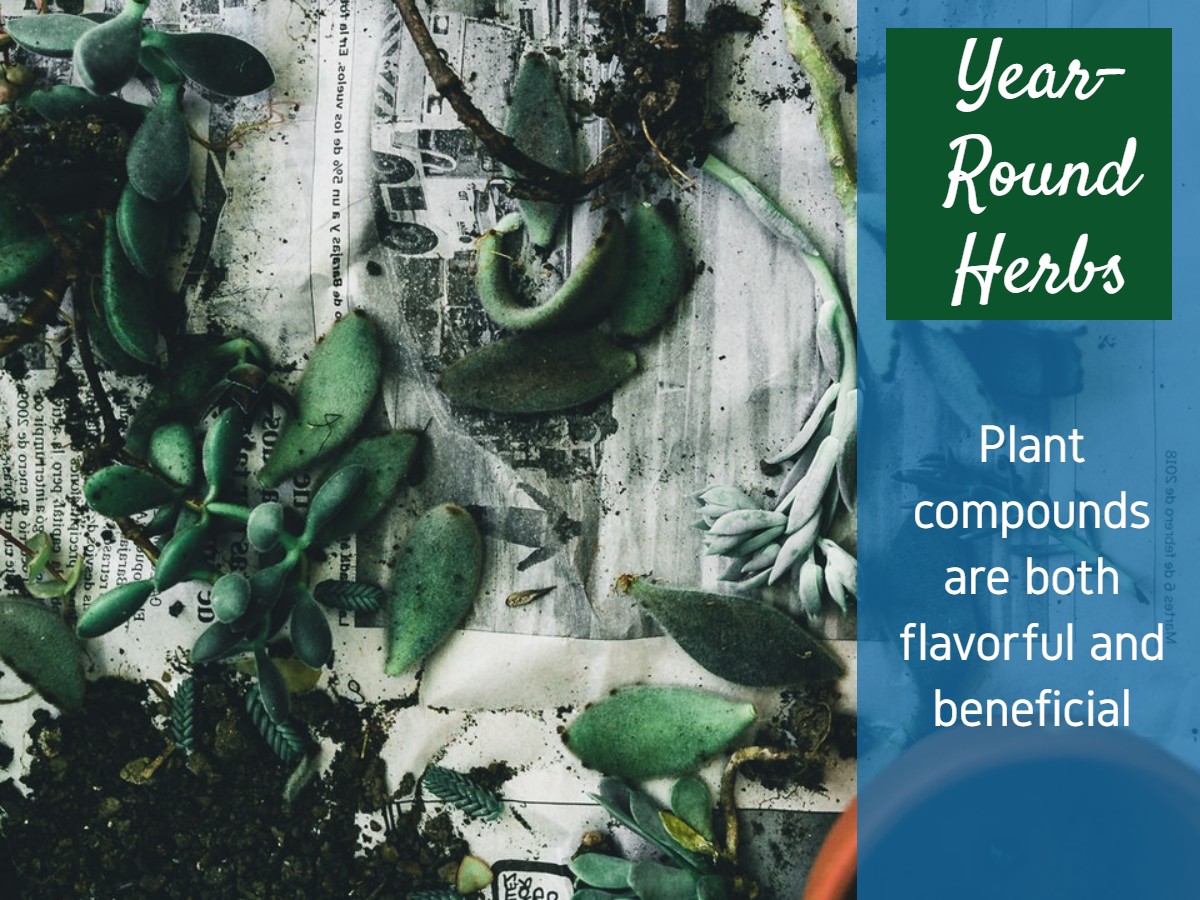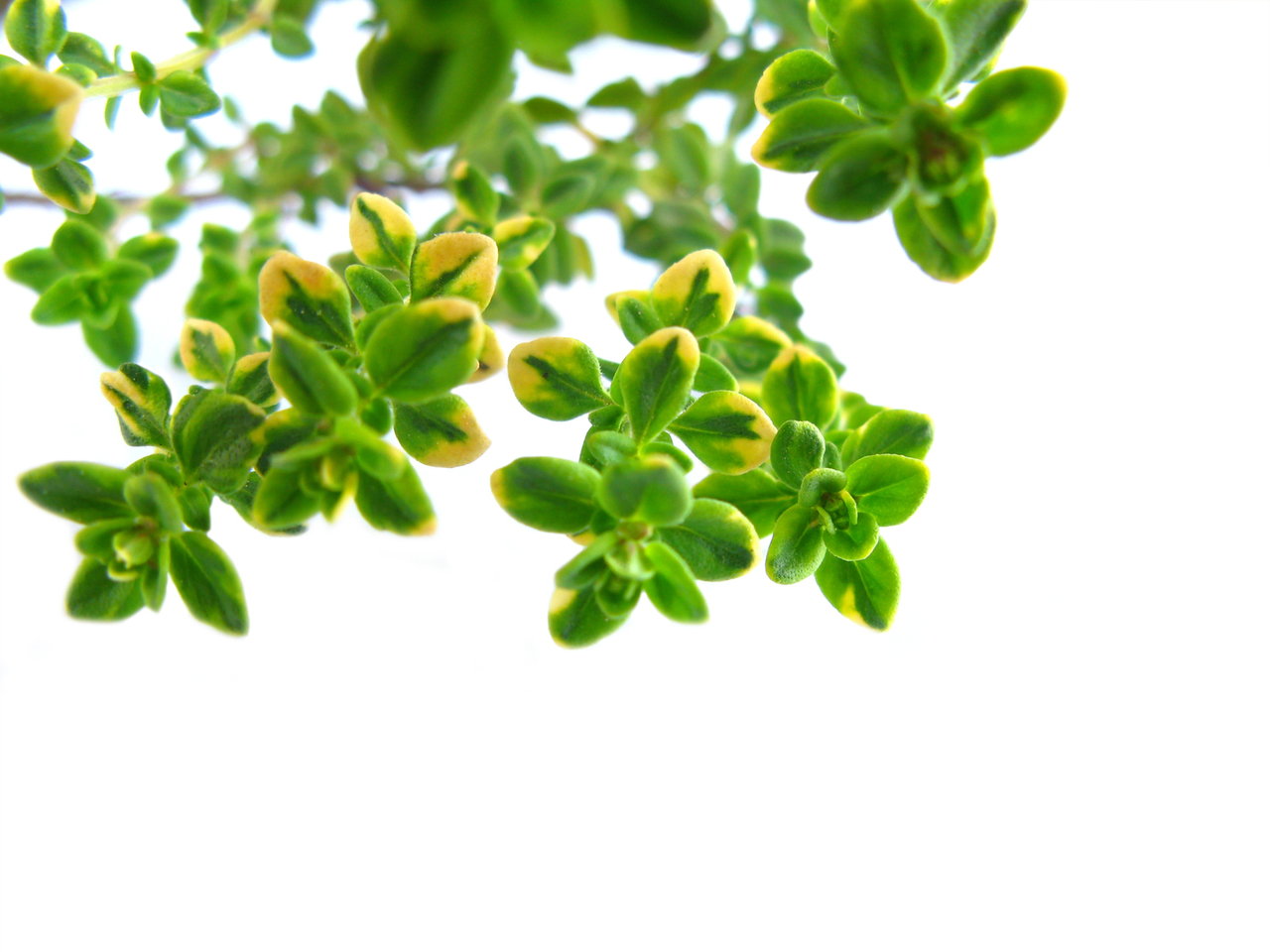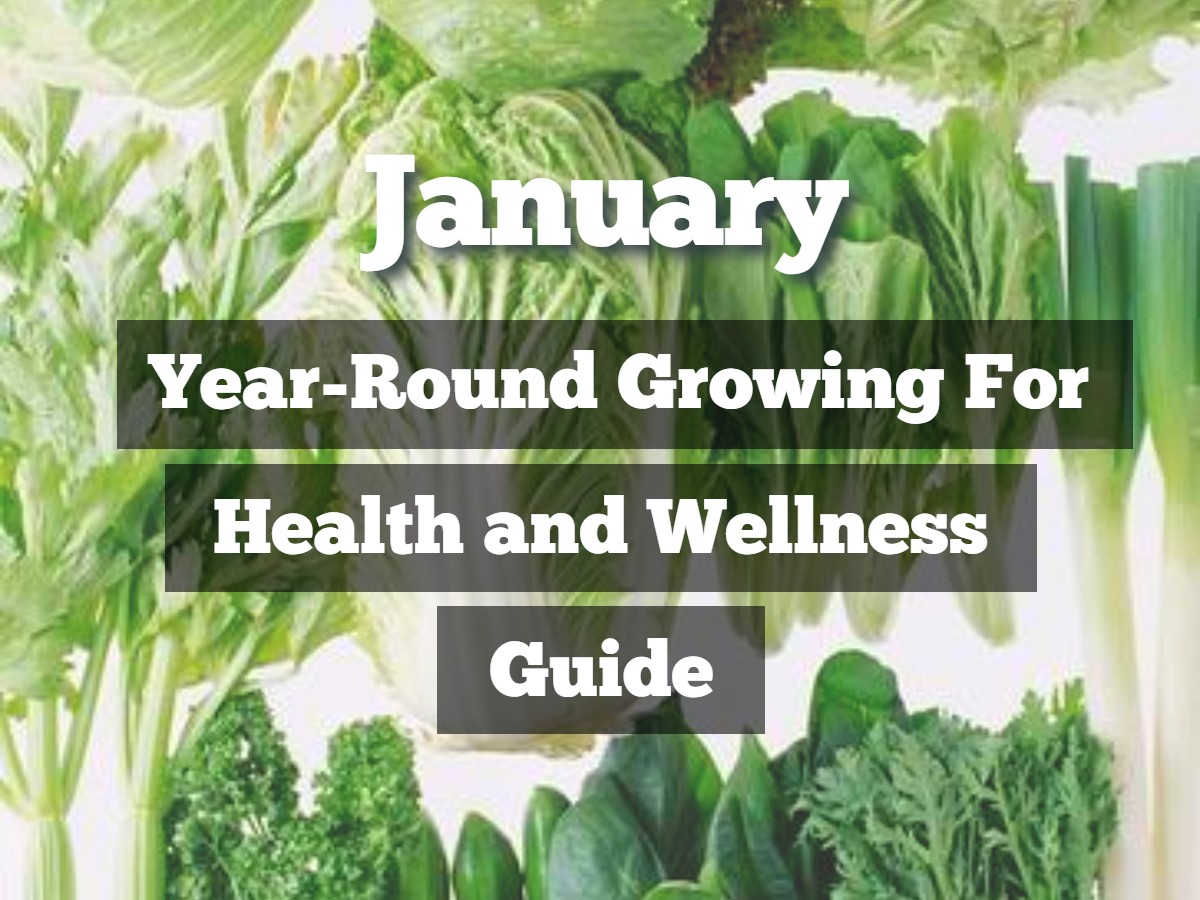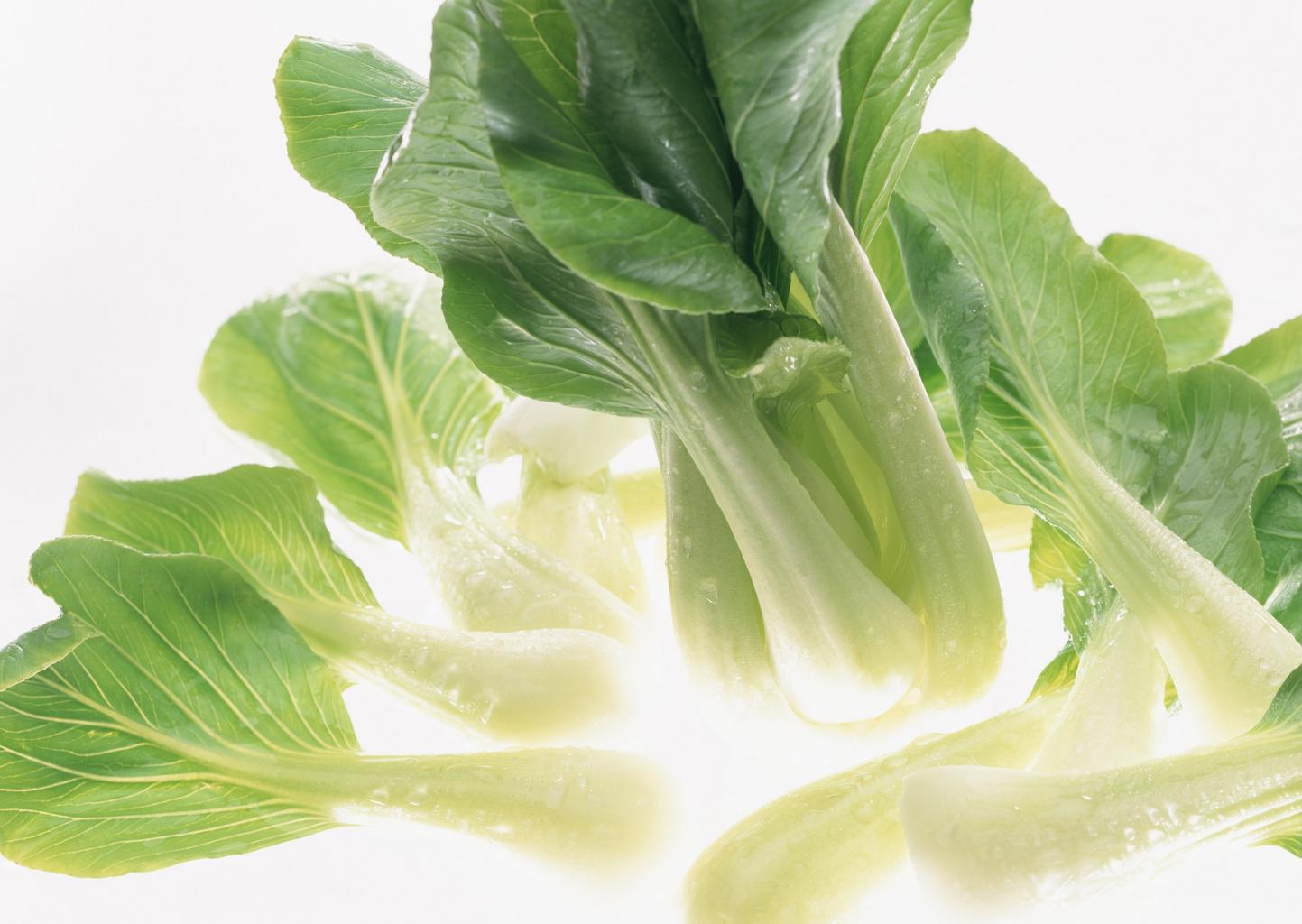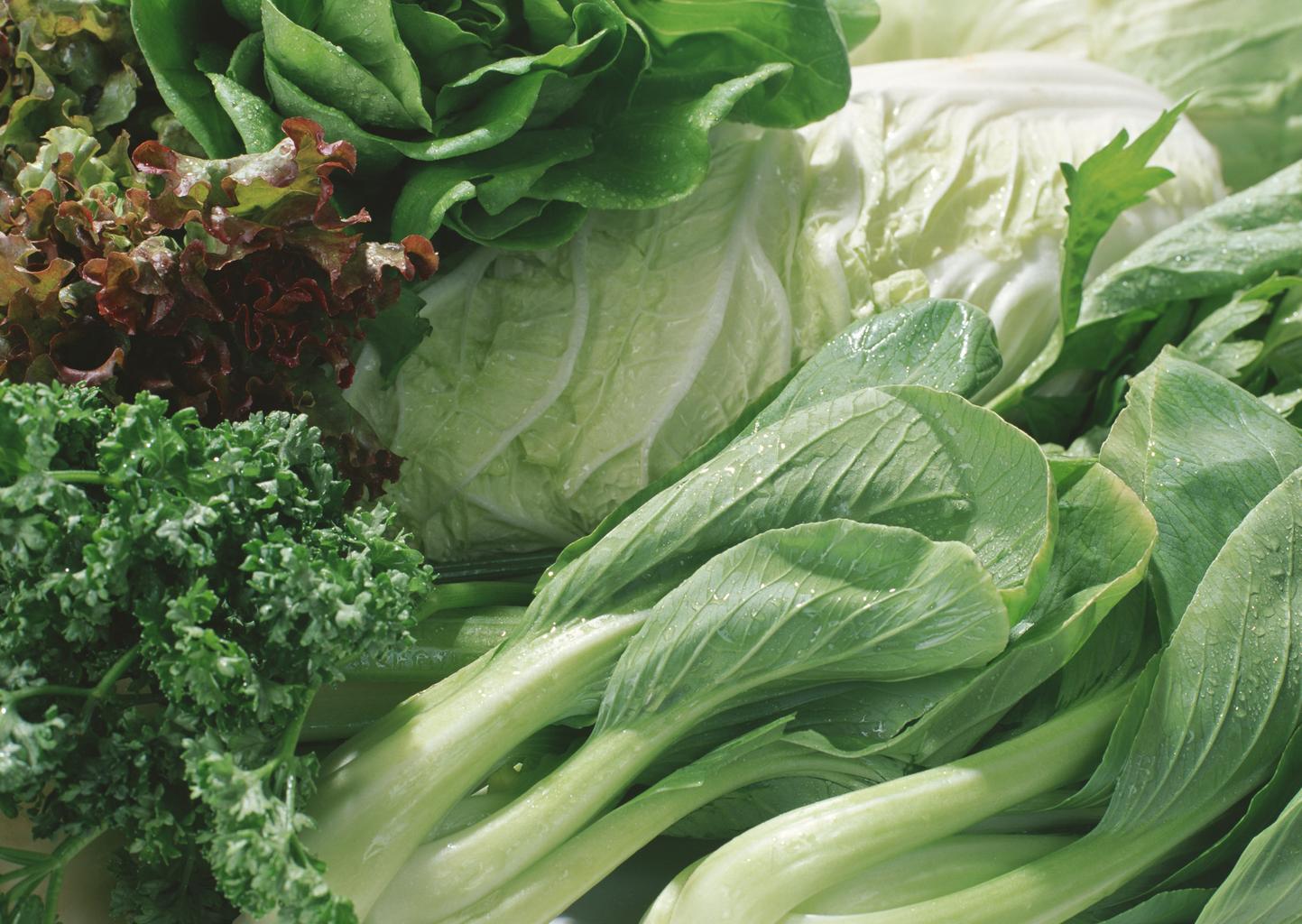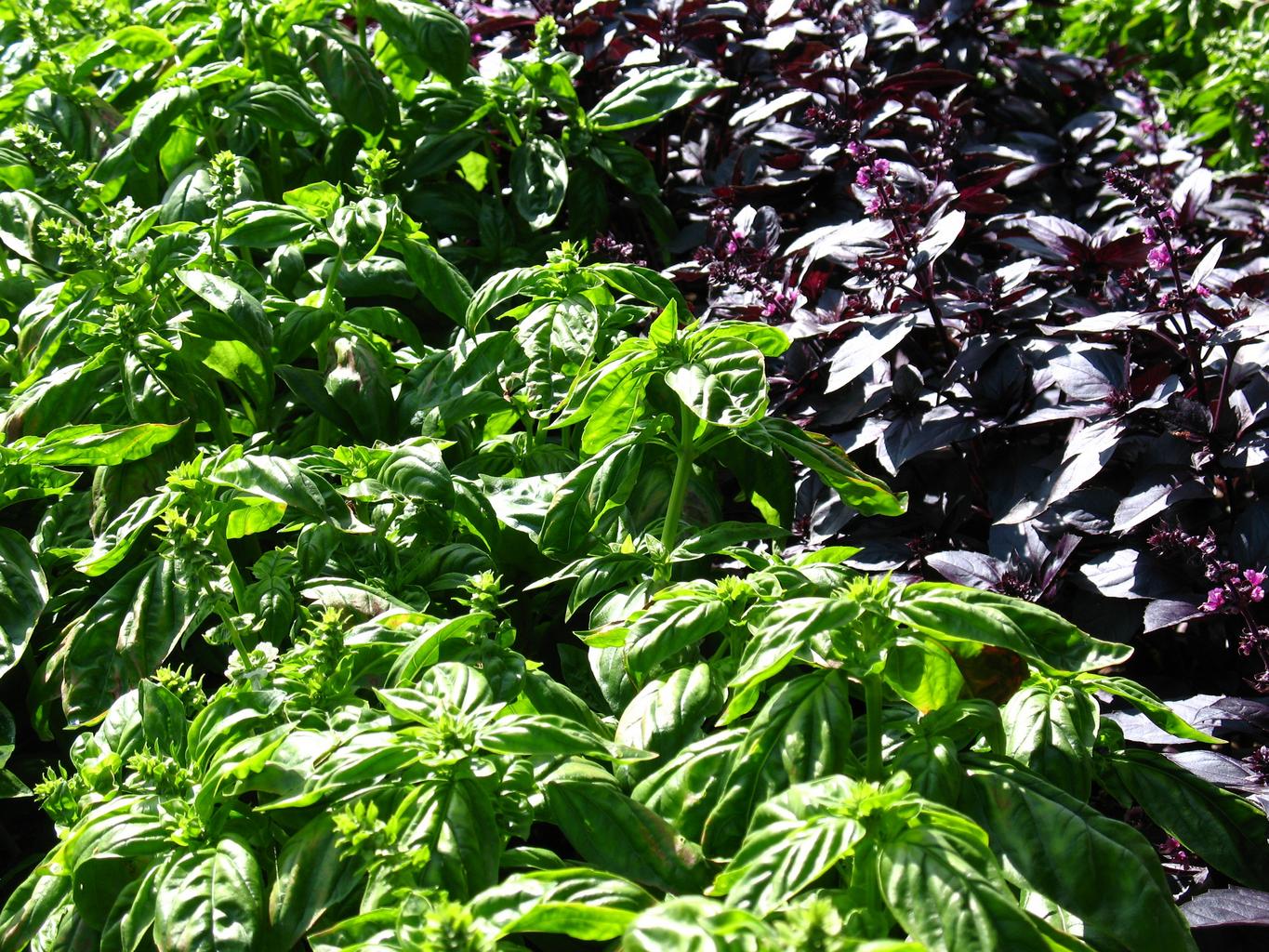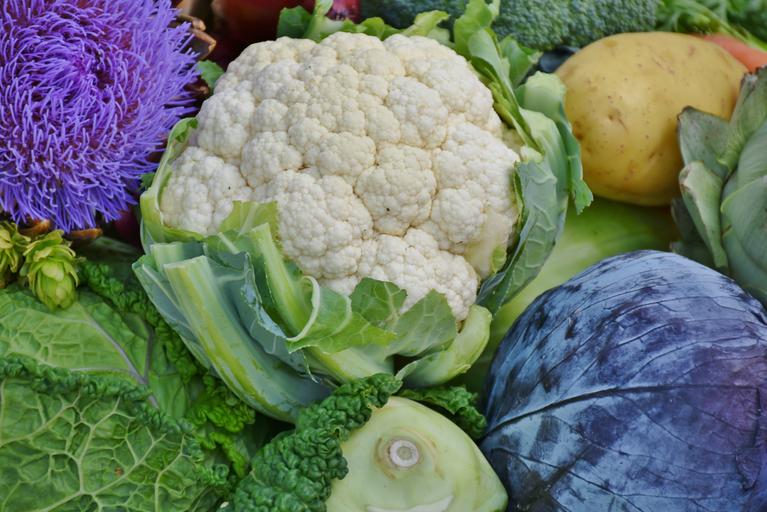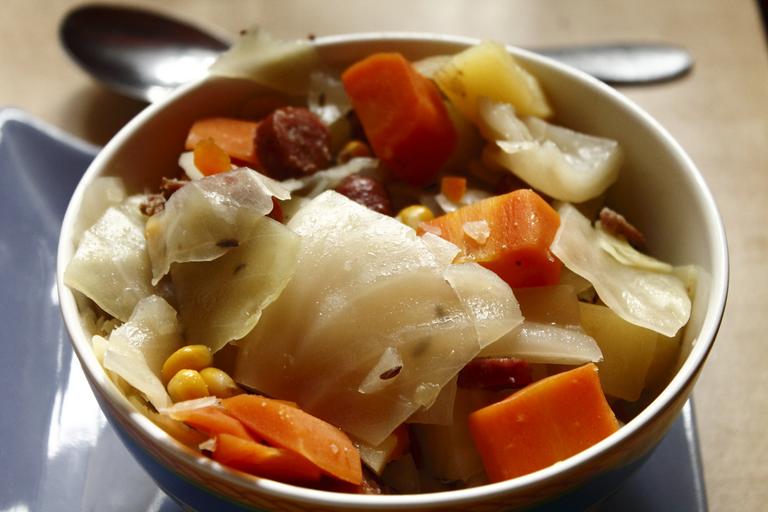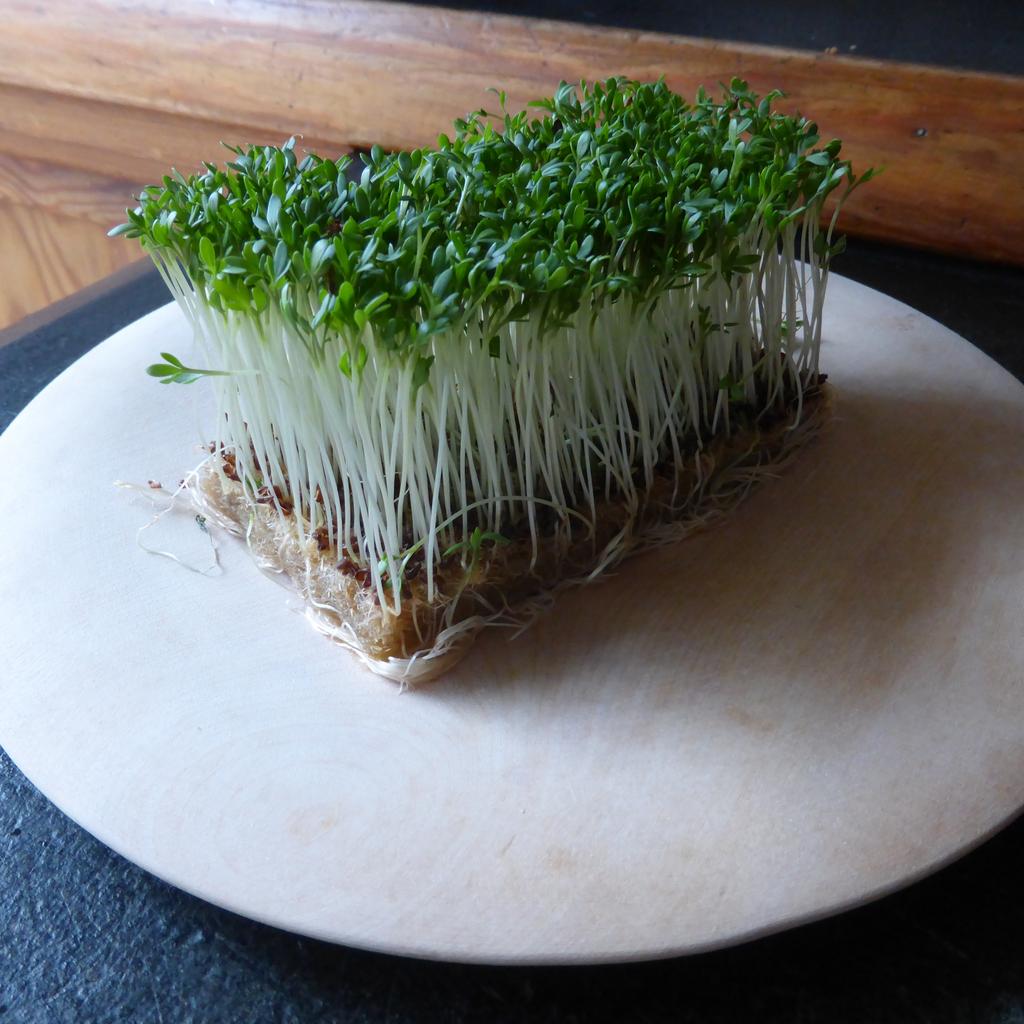Grow Carrots in Winter
这周,我们全年增长指导将集中on one superstar superfood: the versatile carrot. To grow carrots in winter, more preparation is needed than for other vegetables, but they adapt easily torows,containers, under a cloche, or in ahoop house.
Many varieties of carrot do well for cold-weather growing; with the proper planning, these can thrive when temperatures drop. Carrots offer so many nutrients that having a crop ready for harvest year-round will give you a wealth of health benefits. Read on to discover the perfect carrot choices for planting in winter.
Soil Preparation for Carrots
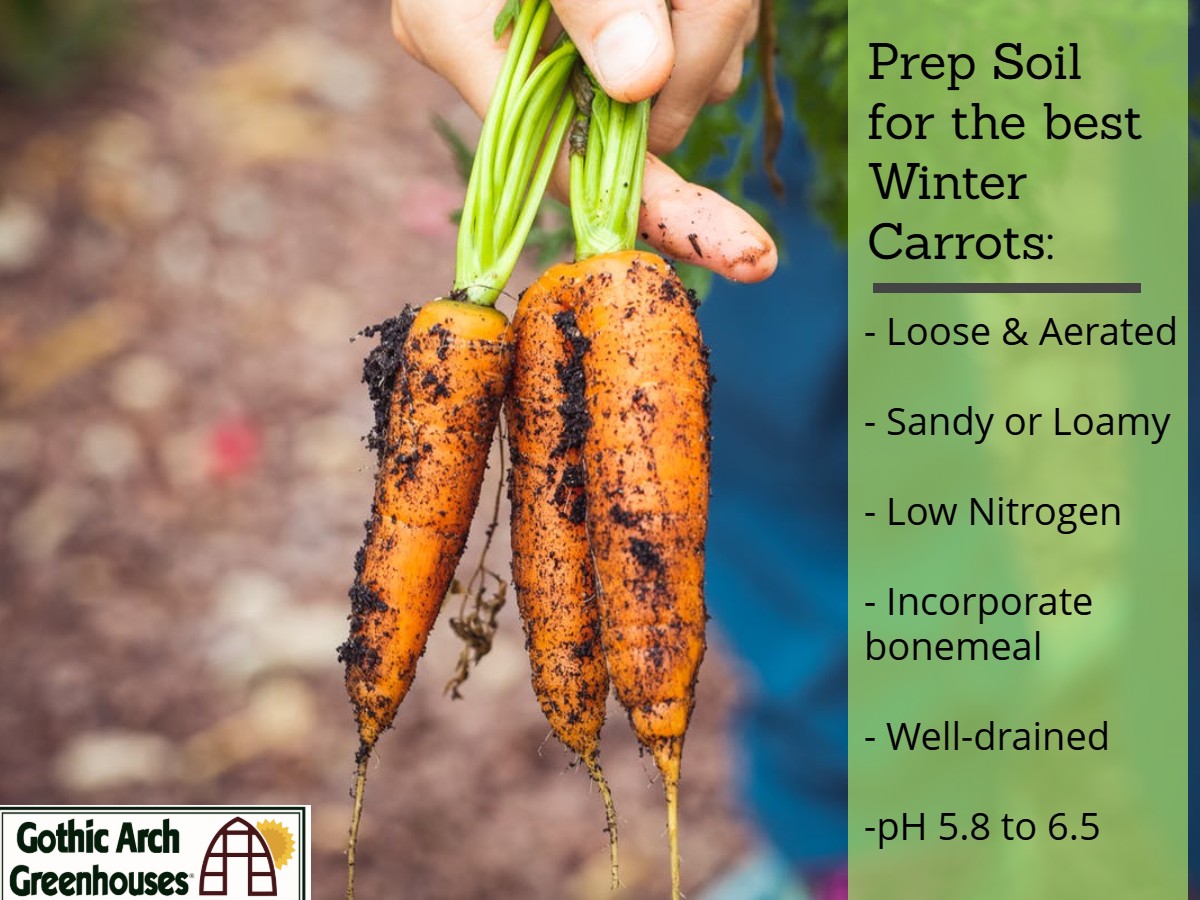
Best Soil for Winter Carrots
If the soil outside if not frozen, or if you are growing in a greenhouse, covered raised beds, or planters, you can start carrots as early as January. Carrots do not like to be transplanted, so they will need to be planted where you will harvest them, but they can do well in 12″ to 18″ depth containers. For growing outdoors without shelter, we recommend waiting to plant until around 5 weeks before your expected last frost.
Carrots are easy to grow year-round, but must have proper soil conditions to thrive. Average soil temperature should be around 40 degrees to start your carrot seeds. They like loose, sandy soil to allow plenty of room for root development. If the soil has stones or clumps, carrots can become stunted or misshapen.
Avoid fertilizing with nitrogen-rich materials, which can cause forking and off-shooting of roots. Old coffee grounds work well for carrots. Sand and peat moss are also good soil additives to encourage the light, airy soil carrots prefer.
Make sure you have proper drainage. Carrots dislike too much moisture, and will generate thin, hairy roots, destroying their texture, if not well-drained. Raised beds and containers generally drain well but allow for plenty of watering during root development. This makes the deep, loose soil of araised bedor planter a great choice for growing carrots in winter.
Carrots can tolerate frost and like cool temperatures. Carrot seeds are slow to germinate in the cooler weather, but they need cool temperatures for developing sweet, well-formed roots. A 40-degree average temperature is perfect for carrots! Depending on which variety you are growing and your local growing conditions, carrots may take anywhere from 2 to 4 months to mature.
Best Practices to Grow Carrots in Winter
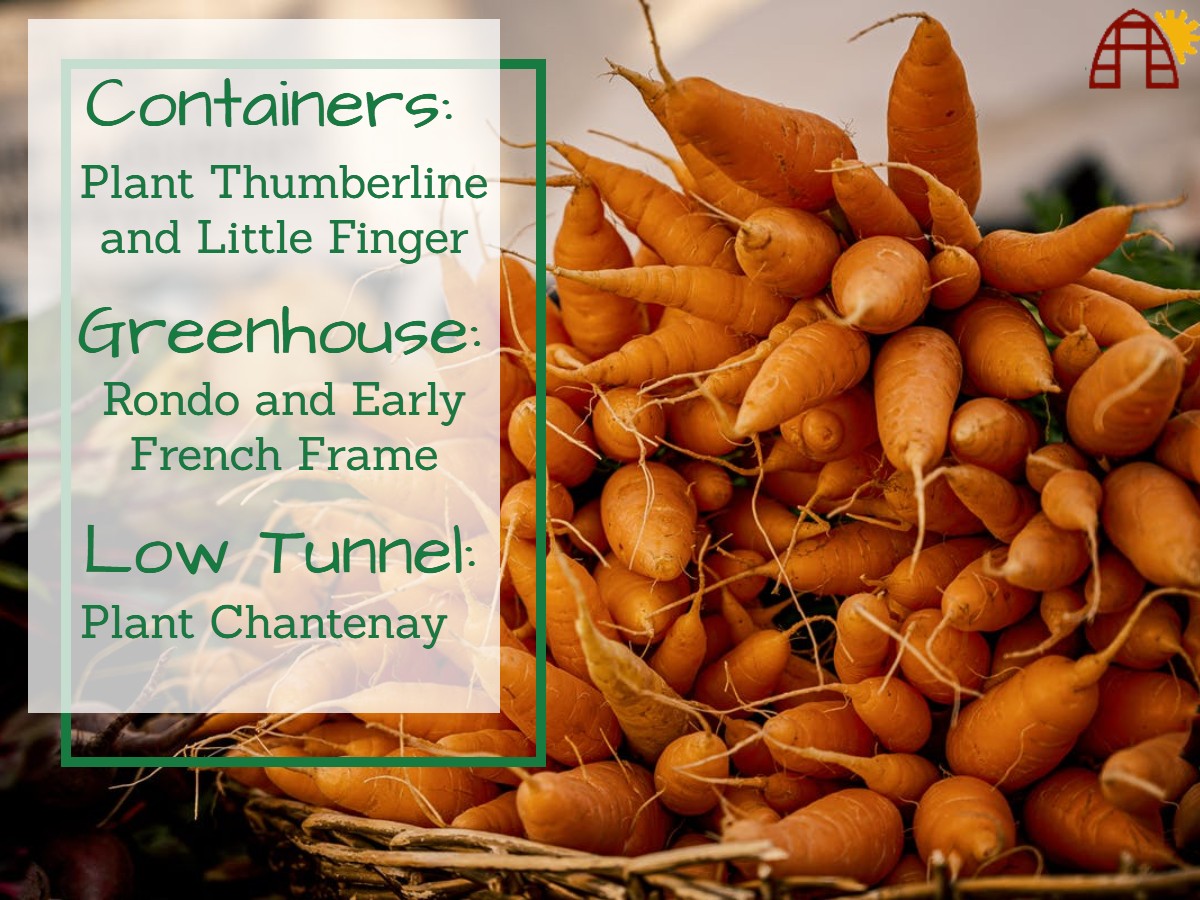
Best Carrot Varieties for Winter Growing
First, choose your seed variety. Good choices for winter carrots grown in containers orgrow bagsare Little Finger heirloom, a small carrot only 4 inches long and 1-inch thick, and Thumberline heirloom, a round carrot, good for thicker soil.
If you’re planting in a hoop house or in the ground in a greenhouse, Chantenay carrots develop stocky roots that become sweeter in cool soil. Rondo and Early French Frame are also good choices to sow around the interior edges of your greenhouse.
Sow carrot seeds ¼” deep, and 3” to 4” apart in an area that gets full sun to partial shade, at least six hours of sun per day. Carrots don’t take up much space, averaging six carrots per square ft, and can be sown every three weeks for multiple harvests throughout the winter.
Mulch or cover with vermiculite during the germination period. Carrots take a long time to germinate, and prefer moist soil for the first ten days. To reduce evaporation and warm the soil, try covering your carrot bed with old blankets for the first five to six days.
Water carrots to at least one inch per week to start, and then two inches as roots mature. Make sure that soil remains airy and easy to drain with the added moisture.
Carrots take a long time to grow to maturity, up to four months. The best reason to grow carrots in winter is that carrots taste better after few frosts, due to the accumulation of sugars in the roots. Generally, the smaller the carrot, the better the taste; most carrots are at their best flavor and texture when they reach finger size.
Health Benefits of Carrots
Carrots have an impressive array of health benefits. They’re very nutritious; one carrot, whether raw or cooked, will provide more than double one day’s worth of Vitamin A. This cell-protective antioxidant supports lung and skin health, and has been shown to protect against cognitive decline. Along with the additional antioxidants lutein and zeaxanthin, Vitamin A is important to vision and eye health. Compounds found in carrots protect the retina and lens, and deficiencies can lead to visual impairment.
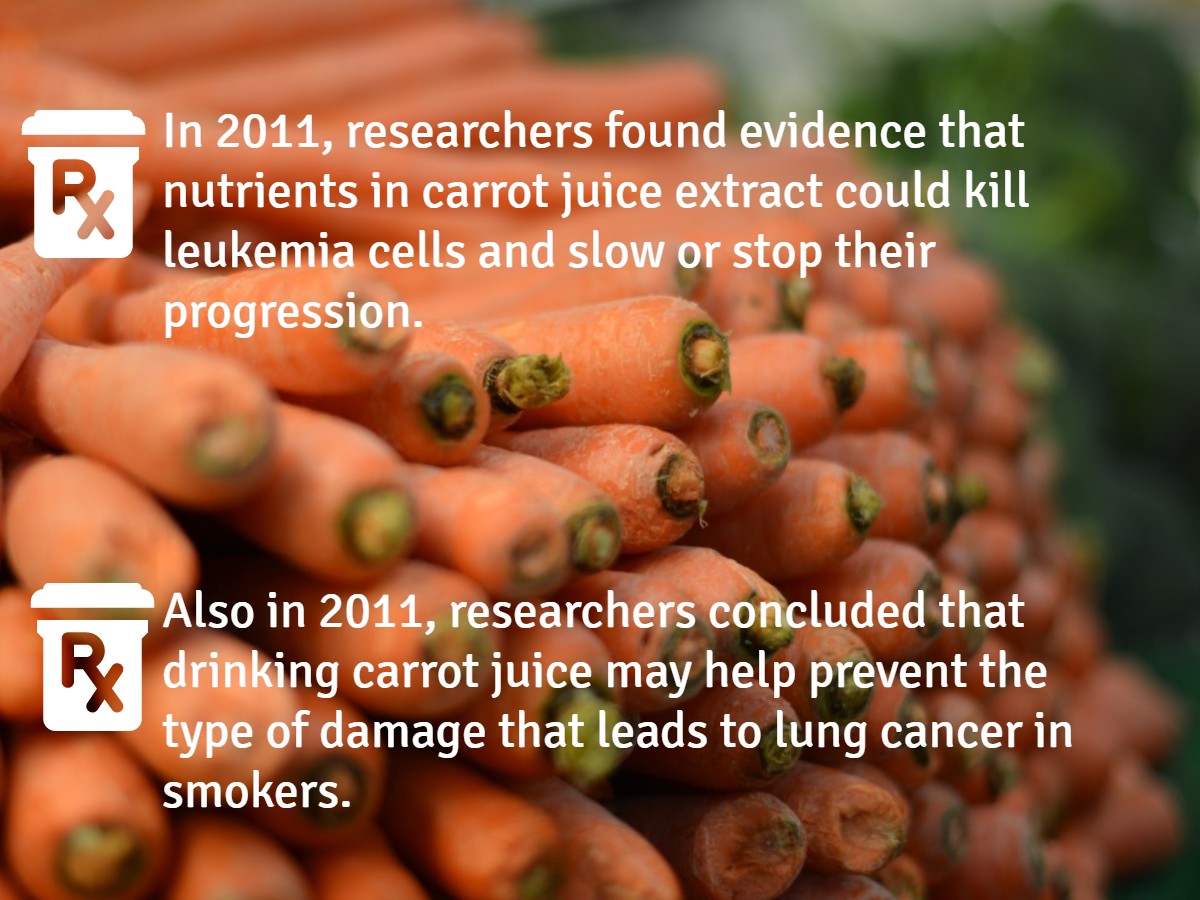
Anti-cancer studies with carrots show promise
Carrots contain high levels of several carotenoids, plant compounds that may protect eye and cardiovascular health, and reduce the risk of certain cancers. The American Institute for Cancer Research found in 2016 that foods containing carotenoids lower the risk of mouth, pharynx and larynx cancers. Additional 2017 studies found that dietary intake of carrots lowers the risk for breast cancer for women of all backgrounds.
This is possibly a result of other bioactive phytonutrients called polyacetylenes. In carrots, the polyacetylenes falcarinol and falcarindiol have shown anti-tumor activity.
Ways to Add Carrots to Your Diet
If you grow carrots in winter, you can add a pop of flavor and nutrition to every meal, snack, and even dessert! Grate carrots into your favorite bran muffin recipe, or puree them with a bit of ginger for a delicious morning oatmeal. Roast them along with eggplant, zucchini, and red onion for a lunchtime pita sandwich with hummus. For dinner, think beyond salads and sides—carrot soup is a warm treat for a cold night, and pairs well with the spices of a carrot cake dessert! Our favorite carrot soup recipe is easy to make into a family favorite!
Mediterranean Carrot Soup

30 Minute Mediterranean Carrot Soup
成份:
- 2 Tbsp olive oil
- 1 C finely chopped sweet onion
- 1 Lb large peeled carrots, with 1/2-inch dice (about 2-2/3 C)
- 2-1/2 C low-salt chicken broth
- 1-1/2 tsp cumin seeds
- 1 Tbsp raw honey
- 1 tsp fresh lemon juice
- 1/8 tsp ground allspice
- 1/2 C plain yogurt, whisked
准备:
- Heat oil in large saucepan over medium-high heat.
- Add onion; sauté 1 minute.
- Mix in carrots and lightly sauté 2 minutes.
- Add broth; bring to boil.
- Reduce heat, cover, and simmer until carrots are very tender, about 20 minutes.
- 搅拌cumin seeds in small skillet over medium-high heat until fragrant, 4 to 5 minutes; cool.
- Finely grind cumin in spice mill.
- Remove soup from heat, then puree in blender or with immersion blender until smooth.
- Return to same pan. Whisk in honey, lemon juice, and allspice.
- Season with salt and pepper.
- Ladle soup into bowls. Drizzle yogurt over; sprinkle generously with cumin.
To Further Your Growing Efforts
If sustainable, healthy eating is part of your plan for 2020, a greenhouse can expand your growing options, extend your growing season, and provide you a space to put your hobby into practice. Our experts can guide you towards the perfect growing solution that fits your budget and your space. We hope you’ll look to Gothic Arch Greenhouses for the very bestgreenhousesfor sale anywhere.

